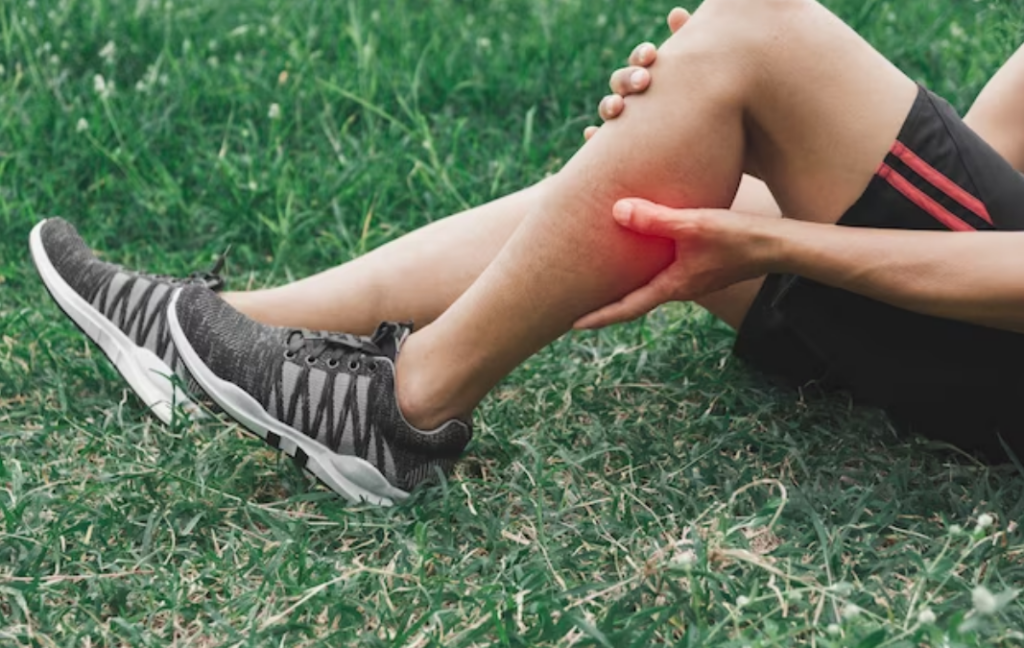When it comes to managing pain, you might be surprised at the effectiveness of natural strategies that can complement traditional treatments. From herbal remedies that harness the power of nature to mindfulness practices that enhance your mental resilience, there are several approaches worth considering. Techniques like acupuncture and dietary changes could also play a significant role in your pain relief journey. Each method has its unique benefits, and understanding them can empower you to make informed choices. So, which strategies could be the most beneficial for your specific needs?
Herbal Remedies
Herbal remedies offer a natural approach to managing pain, and many people find them effective. If you're considering this route, you'll discover a variety of options that can help alleviate discomfort without relying solely on pharmaceuticals.
One popular choice is turmeric, known for its anti-inflammatory properties. You can incorporate it into your meals or take it as a supplement, and it may help reduce pain associated with arthritis and other inflammatory conditions.
Another common remedy is ginger, which has been used for centuries to combat pain and inflammation. You can enjoy ginger tea or add fresh ginger to your dishes, and it might provide relief from headaches and menstrual cramps.
Additionally, willow bark has gained attention for its pain-relieving properties, similar to aspirin. You can find it in teas or capsules, and it may help with back pain and headaches.
If you're looking for something soothing, consider essential oils like peppermint or lavender. You can use them in a diffuser or mix them with a carrier oil for massage. Both have analgesic properties and can promote relaxation.
However, it's crucial to test for allergies and consult with a healthcare provider before starting any herbal regimen, especially if you're on medication.
Finally, always remember that individual responses to herbal remedies can vary, so it might take some experimentation to find what works best for you. Embrace the natural options available, and you might just find the pain relief you've been seeking.
Mindfulness and Meditation
Mindfulness and meditation can be powerful tools for managing pain and enhancing your overall well-being.
By learning various techniques, you can find what works best for you and incorporate these practices into your daily routine.
Embracing mindfulness not only helps reduce pain but also promotes a greater sense of calm and awareness in your life.
Benefits of Mindfulness
Practicing mindfulness and meditation can greatly enhance your overall well-being. By focusing on the present moment and cultivating awareness, you can experience a range of benefits that positively impact your daily life.
Here are some key advantages of incorporating mindfulness into your routine:
- Reduced stress: As you learn to observe your thoughts and feelings without judgment, you'll find it easier to manage stress levels and respond calmly to challenges.
- Improved focus: Mindfulness trains your brain to concentrate better, helping you stay focused on tasks and make clearer decisions throughout the day.
- Enhanced emotional regulation: You'll develop a deeper understanding of your emotions, allowing you to respond thoughtfully rather than react impulsively.
Meditation Techniques Explained
Meditation offers a powerful toolkit for enhancing your mental and emotional health, and understanding various techniques can help you find the right fit for your needs.
One popular method is mindfulness meditation, where you focus on your breath and observe your thoughts without judgment. This practice can ground you and reduce anxiety.
Another effective technique is loving-kindness meditation. In this approach, you cultivate feelings of compassion and love for yourself and others. You repeat positive phrases, which can enhance your emotional resilience and promote a sense of connection.
Guided meditation is also a great option if you find it hard to meditate alone. You can listen to recordings led by instructors, making it easier to stay focused and relaxed.
If you prefer something more dynamic, try movement-based meditation, such as yoga or tai chi, which combines physical movement with mindfulness.
Lastly, body scan meditation helps you connect with your physical sensations. You mentally scan your body from head to toe, releasing tension as you go.
Incorporating Mindfulness Daily
Incorporating mindfulness into your daily routine can transform the way you experience life. By focusing on the present moment, you can reduce stress and enhance your overall well-being.
Start small and gradually build your practice.
Here are three simple ways to weave mindfulness into your day:
- Morning Breathing: As soon as you wake up, take a few minutes to sit quietly and focus on your breath. Feel the air filling your lungs and notice how it energizes your body.
- Mindful Eating: During meals, savor each bite. Pay attention to the flavors, textures, and aromas. This not only enhances your eating experience but can also help you recognize when you're full.
- Nature Walks: Spend time outdoors, observing the world around you. Notice the colors of the leaves, the sound of birds, and the feel of the breeze on your skin. These moments can ground you and reduce anxiety.
Acupuncture Therapy
Exploring acupuncture therapy can open new avenues for natural pain relief. This ancient practice, rooted in Traditional Chinese Medicine, involves inserting thin needles into specific points on your body. Many people find that these strategic placements can help alleviate various types of pain, from chronic backaches to migraines. The theory behind acupuncture is that it balances your body's energy, or "qi," which can lead to improved overall health.
When you undergo an acupuncture session, your practitioner will assess your needs and tailor the treatment accordingly. You might feel a slight prick when the needle enters, but most patients report minimal discomfort. Each session usually lasts between 30 to 60 minutes, and you may even feel a sense of relaxation as the treatment progresses.
Research supports acupuncture's effectiveness for pain relief, showing it can stimulate the release of endorphins—your body's natural painkillers. It also promotes blood circulation, which can aid healing and reduce inflammation.
If you're seeking a holistic approach to managing pain, acupuncture may be an excellent option to contemplate. Before starting treatment, consult with a licensed acupuncturist who can guide you through the process. They can address any concerns you might've and help you understand what to expect.
Physical Exercise
After experiencing the benefits of acupuncture, you might want to contemplate another powerful tool for natural pain relief: physical exercise. Engaging in regular physical activity not only helps reduce pain but also boosts your overall well-being. When you move your body, you release endorphins, which act as natural painkillers and mood elevators.
You don't have to be a gym enthusiast to reap these benefits. Simple activities can make a huge difference in how you feel. Consider incorporating the following into your routine:
- Walking in nature: Feel the ground beneath your feet, breathe in the fresh air, and let the sights and sounds of nature rejuvenate your spirit.
- Gentle stretching: Ease tension from your muscles, improve your flexibility, and promote relaxation with simple stretches that can be done anywhere.
- Yoga or tai chi: Experience a blend of movement and mindfulness, enhancing both your physical and mental health.
Whether you choose to dance, swim, or practice yoga, the key is finding something you enjoy. Not only will you be helping to manage your pain, but you'll also cultivate a positive relationship with your body.
Aim for consistency rather than intensity. Just remember, even short bursts of activity can lead to significant improvements in your pain levels, allowing you to enjoy life more fully.
Aromatherapy
Aromatherapy can work wonders for your pain relief journey by harnessing the natural healing properties of essential oils. When you breathe in these concentrated plant extracts, they can promote relaxation, reduce stress, and alleviate various types of pain. You might find that certain scents resonate with you more than others, so it's crucial to experiment and discover what works best for your body.
Lavender oil, for instance, is well-known for its calming effects. If you're dealing with headaches or muscle tension, you can diffuse lavender in your space or apply it topically (diluted with a carrier oil) to the affected area.
Eucalyptus oil can also be beneficial, especially if you're experiencing sinus pain or inflammation; its cooling properties can open up your airways and relieve discomfort.
To get started with aromatherapy, consider investing in a diffuser. This simple device disperses essential oils into the air, allowing you to enjoy their benefits throughout the day. You can also create a personal inhaler by adding a few drops of your chosen oil to a cotton ball and sealing it in a small container. Whenever you need relief, just take a deep breath.
Remember to choose high-quality, pure essential oils to maximize effectiveness. As you explore this natural approach, pay attention to how your body responds.
Aromatherapy isn't a one-size-fits-all solution, but with patience and practice, it can become a valuable tool in your pain management toolkit.
Hot and Cold Therapy
Hot and cold therapy offers a simple yet effective way to relieve pain and reduce inflammation. Whether you're dealing with muscle soreness, joint pain, or an injury, using heat or cold can provide significant relief.
Here's how you can use each method effectively:
Hot therapy increases blood flow, relaxes muscles, and alleviates stiffness. You can use:
- A warm towel draped over your shoulders to ease tension
- A heating pad placed on your lower back for muscle relief
- A warm bath that envelops you, soothing aching joints
On the other hand, cold therapy numbs sharp pain and reduces swelling. It's particularly beneficial right after an injury. You might try:
- An ice pack wrapped in a cloth, applied to a sprained ankle
- A cold compress on your forehead to relieve headaches
- A bag of frozen peas, perfect for contouring to your body's shape
When using hot therapy, limit sessions to around 20 minutes, allowing your skin to cool in between.
With cold therapy, aim for about 15-20 minutes, making sure to protect your skin from direct contact with ice.
Dietary Changes
While incorporating dietary changes might seem intimidating, it can greatly enhance your pain management efforts. The food you eat plays an essential role in how your body responds to pain and inflammation. By making specific dietary adjustments, you can greatly reduce discomfort and improve your overall well-being.
Start by focusing on anti-inflammatory foods. Incorporate plenty of fruits and vegetables, such as berries, leafy greens, and cruciferous vegetables. These are rich in antioxidants that help combat inflammation. Omega-3 fatty acids, found in fatty fish like salmon and walnuts, are also known for their anti-inflammatory properties. You might want to take into account adding more nuts, seeds, and avocados to your meals.
Avoid processed foods, refined sugars, and excessive salt. These can trigger inflammation and worsen pain. Instead, opt for whole grains, lean proteins, and healthy fats. Staying hydrated is essential too; make sure you're drinking enough water throughout the day, as dehydration can lead to increased pain sensitivity.
Additionally, think about keeping a food diary. Track what you eat and how it affects your pain levels. This can help you identify foods that may be exacerbating your discomfort.
Finally, consult with a healthcare provider or nutritionist to develop a personalized plan that suits your needs. Remember, small changes can lead to considerable improvements in your pain management journey. Embrace these dietary shifts, and you might just find relief in unexpected ways.
Conclusion
Incorporating these natural pain relief strategies into your routine can make a real difference in your well-being. From herbal remedies like turmeric and ginger to the calming effects of mindfulness and physical exercise, you've got plenty of options. Don't forget about acupuncture, hot and cold therapy, and making dietary changes for lasting relief. By embracing these practices, you're not just managing pain; you're enhancing your overall quality of life. Start exploring what works best for you today!



